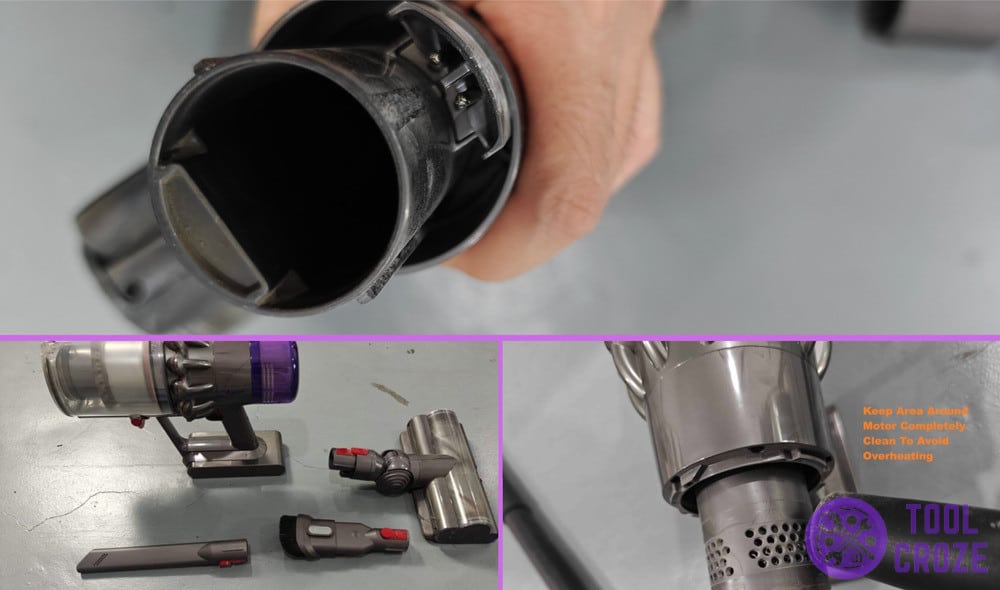
Are you getting no suction from the base of your Dyson vacuum even though there’s no clog?
Loss of suction power in any vacuum cleaner makes it less helpful.
Before we proceed, make sure there is no battery related problem on Dyson vacuum.
I have recorded a video to troubleshoot Dyson vacuum not sucking problem.
If the video above is not solving your problem, go through my list below to narrow down what’s causing this loss of suction, and how to deal with it!
Read: My Tips for Fixing a Dyson Vacuum Fully Charged but Not Working
No Suction From Base of Dyson Vacuum Despite No Clog
- Don’t Rule Out Clogs Entirely
I don’t want any user to go on a wild goose chase by troubleshooting for technical problems when they aren’t there.
That’s why first of all, I want to make sure you don’t rule out clogs entirely.
Even if you gave your Dyson vacuum a very good cleaning, dirt and debris can still build up in hidden parts of the machine which causes a loss of suction, brush not spinning problem.
This is especially true for anyone that used their vacuum near drywall, liquids, or hair recently.
These three things in particular find their way across corners of the device and get stuck there.
They’re a major cause for hidden clogs, and I suggest you use your Dyson’s manual to completely take apart each component of the device to find them.
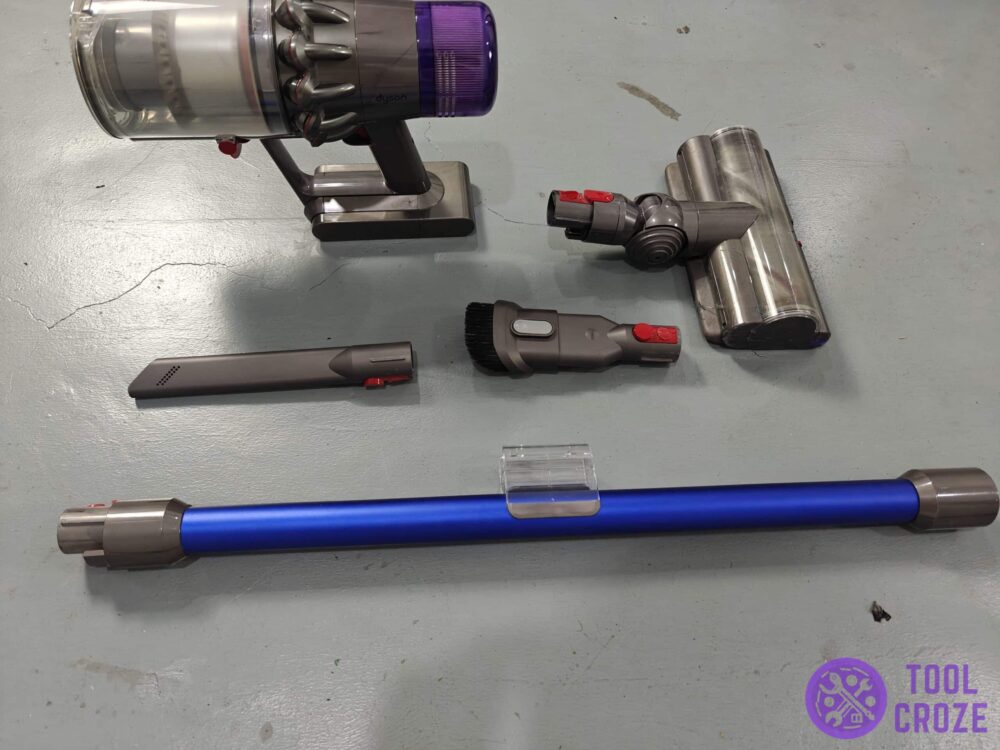
You’ll have to take a look inside each attachment of the vacuum, especially the wand, and make sure each one is clean.
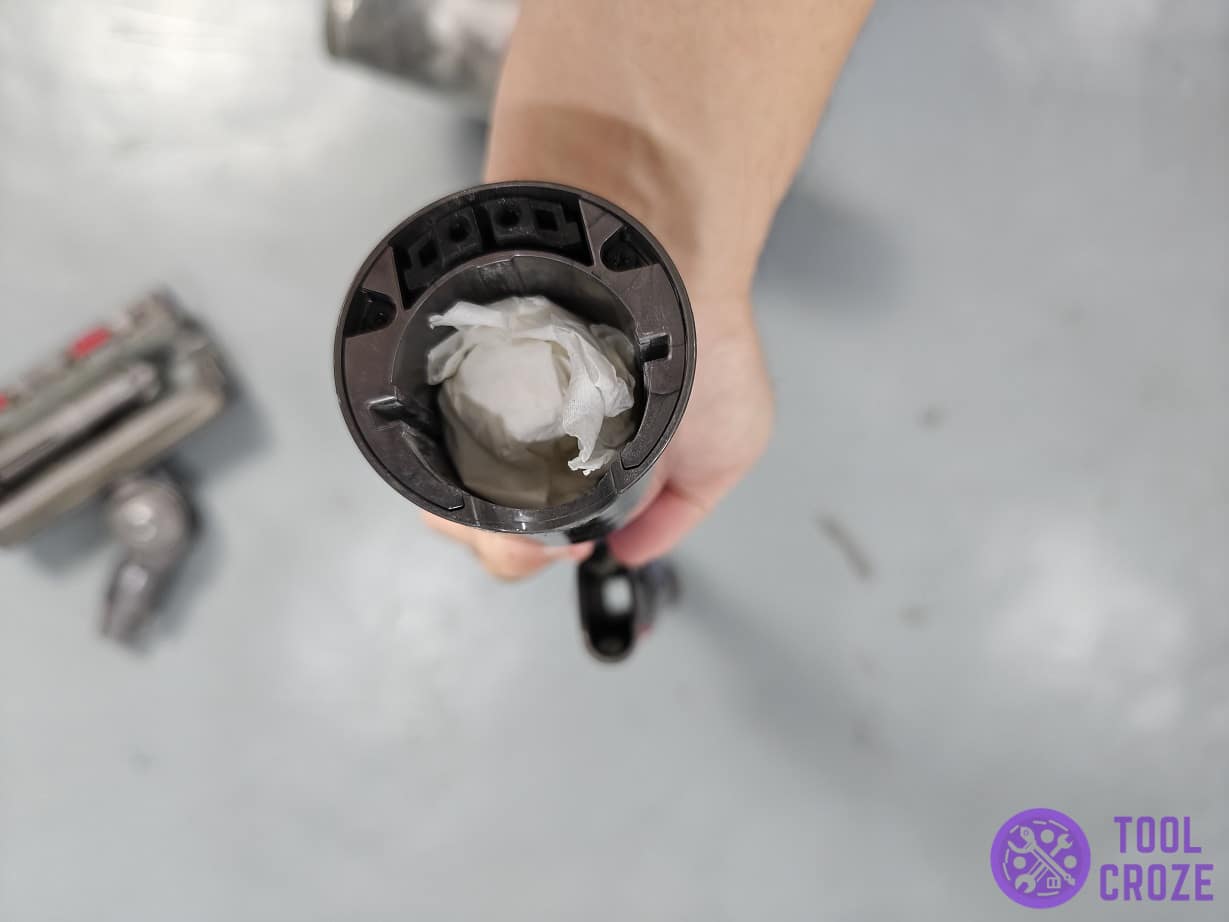
Besides, I recommend you keep an eye out for screws and corners around holes/entry points especially.
Those two places I mentioned are where I usually find the most clogs and keeping them clean is essential to protecting your vacuum’s suction.
Another thing I always do during the maintenance is to clean the filter using water.
Note: Wait the filter to dry before install it back or the Dyson Vacuum might not working after cleaning the filter
This step normally help me to fix the airway blocked warning on my Dyson vacuum.
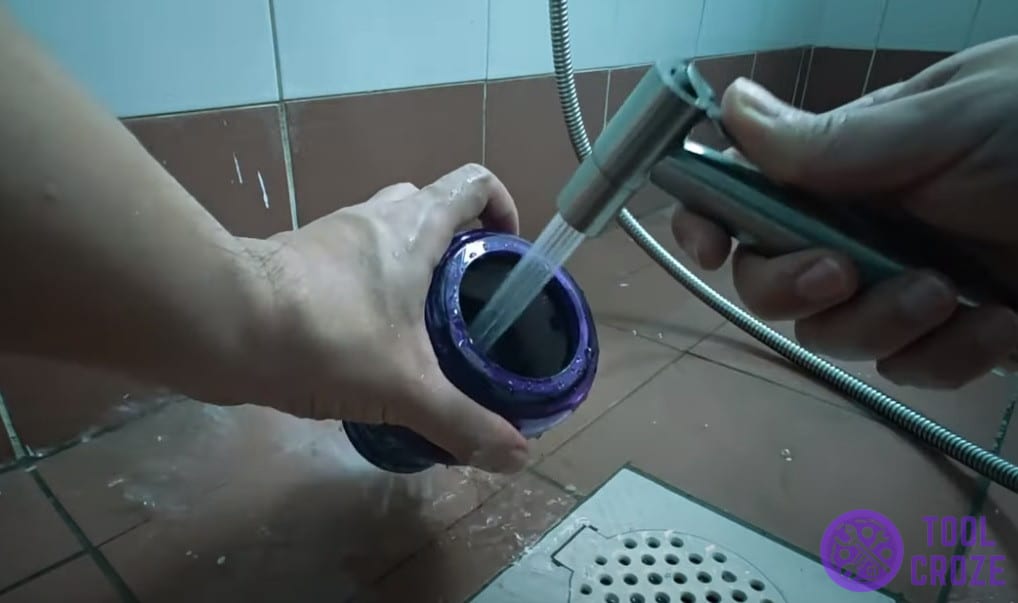
When the filter is clean, there is not much restriction to the airflow and the suction power should return to normal.
A dirty or wet filter can also cause your Dyson vacuum not to work even if its light is already on so be sure to always clean and dry your filter before installing it back to the vacuum.
- Dyson Vacuum Is Overheated
Newer Dyson vacuums like the V11 come with a overheat protection. It’s something I love because it helps the device last much longer. This breaker is basically like a circuit breaker in your home.
But, instead of protecting from power surges, it protects the motor from heat.
If your motor ever overheats, the protection would be activated and turn the motor off until the reason for overheating is resolved.
This issue normally happen together when the Dyson vacuum maximum suction mode also not working.
When the motor is off, your Dyson vacuum won’t be able to generate much power for suction, causing this problem.
So, you need to deal with whatever is making your motor overheat.
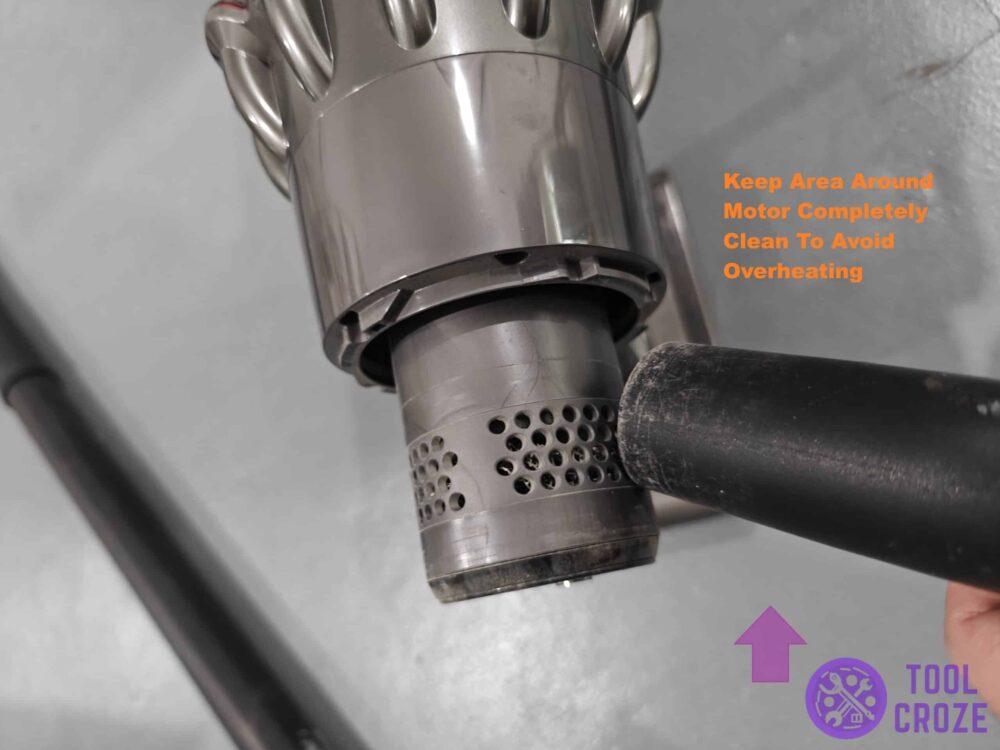
Do what I’m doing in the above above, and clean out the area around your motor and filter after removing the cap on it.
Use another vacuum to suck out dirt, and use a cloth to clean off any residue.
When there is no blockage, the motor shouldn’t overheat anymore as long as you don’t overuse the vacuum.
- Suction Relief Valve Stuck Open
Dyson vacuums have a suction relief valve that you can activate when there’s too much pressure in the device’s suction. Activating that valve reduces suction.
Your best course of action is to find out what’s causing the valve to stay open, and dealing with it. That’ll maintain suction the way you want and stop this issue from occuring again.
The position of the valve is different depending on the Dyson model you have. But, it’s always near the motor, around the section I highlighted below.
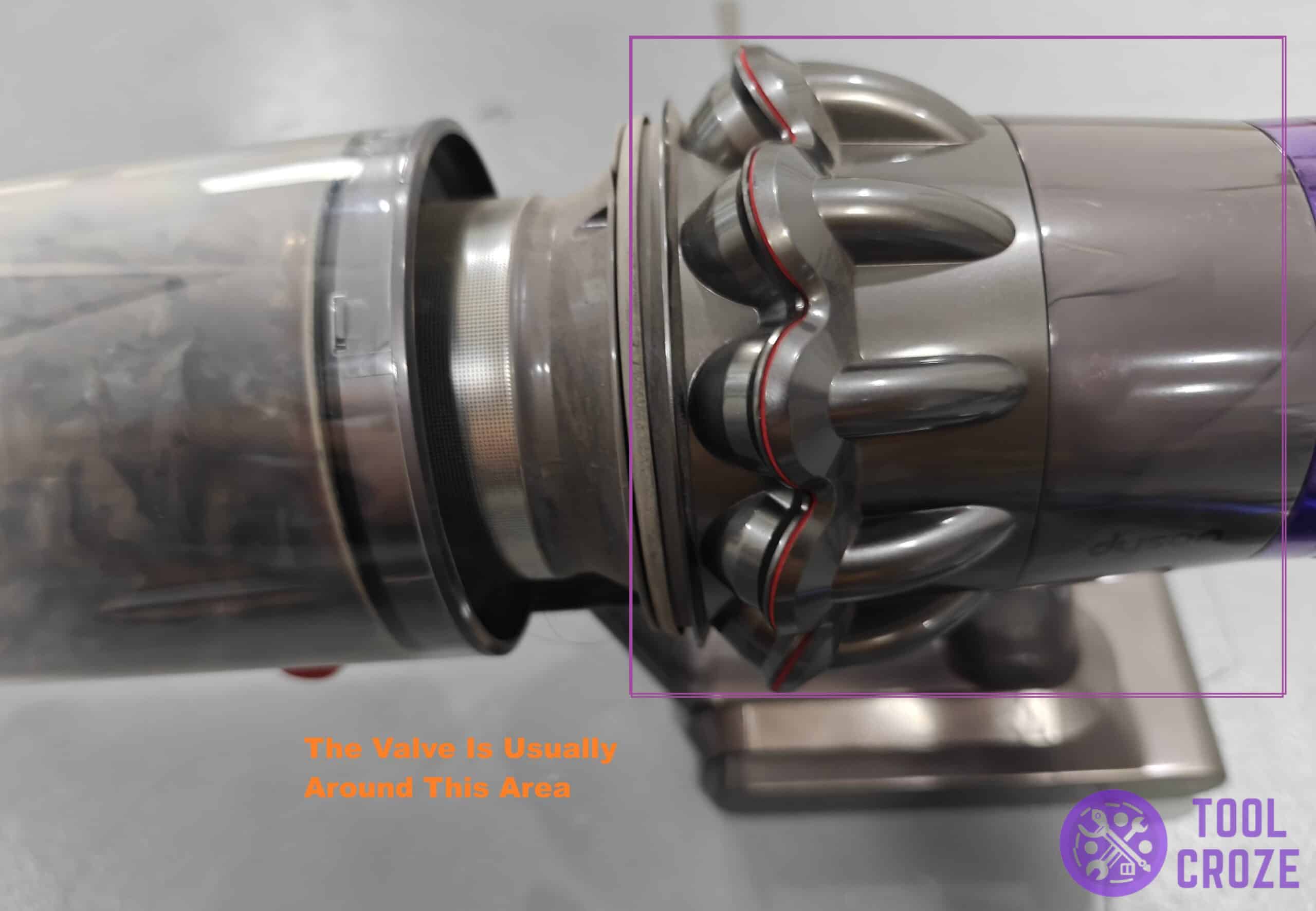
Your device’s manual will give you a better idea of where to find it exactly, in case my image didn’t help. Once you find it, clean any dirt on the valve.
When I had an issue with my relief valve, I found that the reason was its spring being weaker with time passing. It’s not uncommon if you’ve had the vacuum for more than a few years.
The spring was stuck in place and made it stay on, so I had to get a replacement. That might be your situation too.
- Leaks Reducing Suction
If nothing else seems to be the cause, I think there’s probably a small leak in your vacuum. The leak is letting air out, which is reducing suction.
Usually, leaks like these happen because of loose connection points between the attachments.
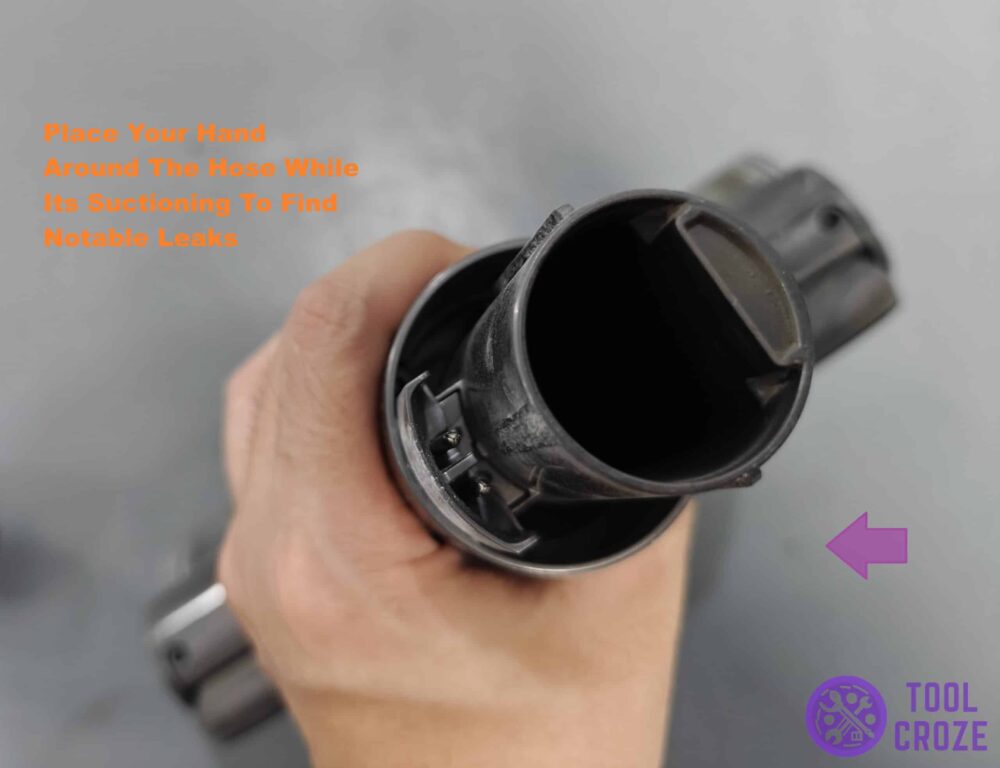
I usually try to find these leaks by running my hand through the device while its on to see if I can feal any air where I shouldn’t be feeling it. But, that doesn’t always work.
In some cases, you might also need to use your ears. Leaks that can’t be felt can still usually be heard, so try getting your ear close to the vacuum to see if you can hear any air seeping in or out.
The floor tool and the wand of the Dyson vacuum are usually where leaks happen, so I would suggest checking there the most.

